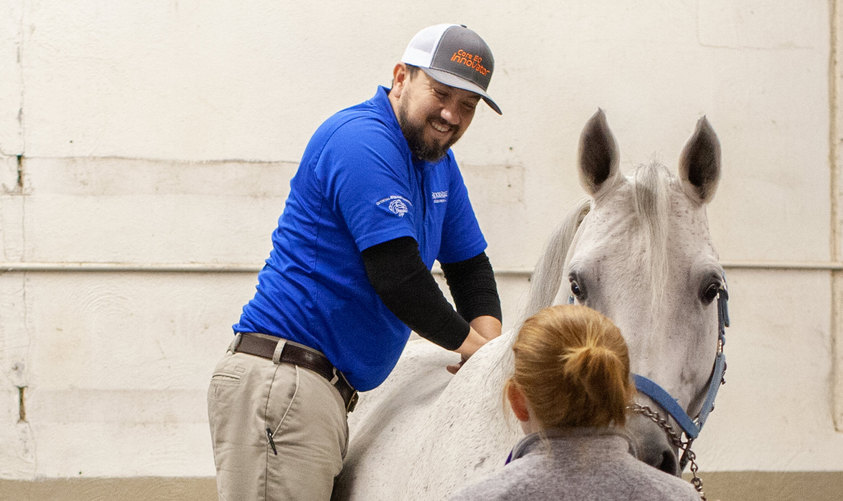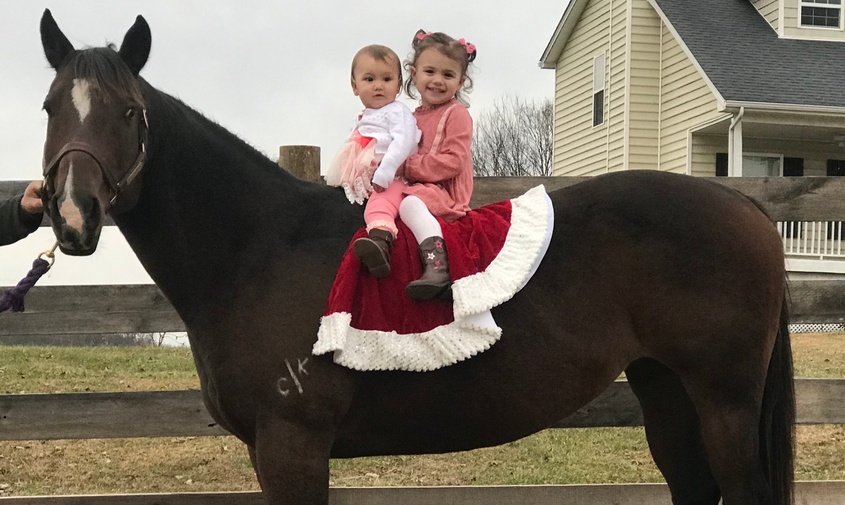Equine Veterinarian Shares Path to Horse Country

SGUSVM alumnus and equine practitioner Dr. Heath Soignier.
When S. Heath Soignier, DVM ’12, CVMST, isn’t visiting his equine patients, one can usually find him practicing new holistic veterinary medicine techniques on his quarter horse, Margarita.
“To me, horses and dogs are two of the best animals: if you trust them completely, they are most willing to reciprocate that trust. Not a lot of animals are like that,” Dr. Soignier said. “I love that I get to work with horses all day long.”
Growing up on a small farm in Bosco, LA, Dr. Soignier always had an affinity for animals, aspiring to be a mixed animal veterinarian. Yet his career path led him another way—and one nearly 700 miles from his hometown.
“During my third year at St. George’s University, I visited Lexington with some classmates,” he said. “You hear of the Kentucky Derby and how it’s the horse capital of the world, but it’s so different to experience it. My plans [after graduation] were to go back home and work in a mixed animal practice there, but I came here for a week and kind of fell in love with the place.”
Following graduation, Dr. Soignier accepted a one-year internship position at Rood and Riddle Equine Hospital in Lexington, KY and was offered to stay on after his internship was completed. Today he is an ambulatory associate at Rood and Riddle, which is a full-service equine hospital with satellite offices in Saratoga, NY and Wellington, FL. The hospital treats all different breeds of equine, including racehorses, quarter horses, mini-ponies, and donkeys.
“Our surgeons even treated a baby giraffe,” he said. “It’s not just thoroughbreds.”
As an ambulatory associate, much of Dr. Soignier’s time is spent on the road, visiting local farms. “Fall is a much slower time compared to the spring, which is foaling and breeding season for thoroughbreds. I handle a lot of reproductive cases, dentistry, even veterinary spinal manipulative therapy (chiropractic) for my patients,” he said. “It’s a bit more of a demanding schedule and it can be a bit stressful in that regard, but I love it.”
“Horses can’t tell you what hurts—it’s our job to figure that out,” he added. “You have to be patient, but horses can really teach you about life and themselves. It’s very rewarding.”
From equipment to improving procedure techniques, even incorporating holistic methods of healing, Dr. Soignier is always looking at ways to impact a horse’s life in a positive way. For example, “within our practice we have digital radiograph machines that can take X-rays in the field. They’re wireless, which allows easier maneuverability and to be able to do that in the field with high-quality images is especially helpful,” Dr. Soignier said.
When not seeing patients, Dr. Soignier enjoys spending time with his wife and fellow SGU graduate Catherine Hercula-Soignier, DVM ’12, and his two young daughters on their 10-acre farm in Georgetown, KY. He is also an avid sports enthusiast and outdoorsman.
“I think the best thing about St. George’s is your classmates become your family,” and in Dr. Soignier’s case quite literally. “I joke that I left Grenada with a degree, a wife, and three dogs.”
Dr. Soignier’s wife is chief of staff at Banfield Pet Hospital, a small animal cooperate practice. He loves that he can ask for her opinion on particularly challenging cases.
“If you had told me 10 years ago this is where I would be, I would say you were crazy,” he acknowledged. “But I worked hard to get where I am today. I wouldn’t trade it for anything.”
–Laurie Chartorynsky






